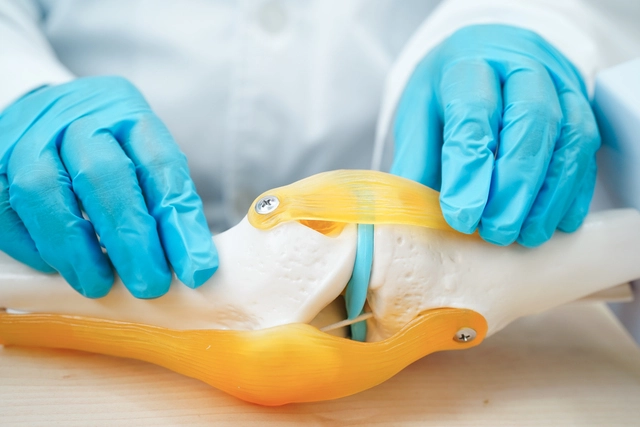Knee replacement surgery is one of the most successful orthopedic procedures, offering patients freedom from pain and the ability to walk comfortably again. However, the real challenge often lies after the operation, during recovery. Many patients unknowingly make errors that delay healing, cause discomfort, or even damage the new joint.
In this blog, we’ll discuss the Top 5 mistakes after knee replacement that people make and how you can avoid them for a smoother, faster recovery. If you’ve recently undergone surgery or are planning for it, this guide will help you stay on track.
Why Recovery Habits Matter After Knee Replacement
The surgery itself is only one part of the journey. Post-surgical rehabilitation is equally important. Your new joint needs care, exercise, and correct lifestyle adjustments to ensure long-lasting results. By avoiding common mistakes, you can:
- Reduce pain and stiffness
- Prevent long-term complications
- Regain strength and flexibility
- Improve your overall quality of life
Mistake 1: Skipping Physiotherapy Sessions
Physiotherapy is the backbone of knee replacement recovery. Many patients assume that once the surgery is done, the knee will heal on its own. Skipping exercises or therapy sessions leads to stiffness, weak muscles, and reduced mobility.
How to Avoid It
- Commit to your exercise plan: Follow the physiotherapist’s instructions diligently.
- Be consistent: Daily sessions, even for 15–20 minutes, are more effective than irregular efforts.
- Start slow but steady: Gradual progress helps prevent strain while still building strength.
Physiotherapy is not optional; it’s as crucial as the surgery itself.
Mistake 2: Ignoring Pain or Swelling
Why It’s a Problem
A certain level of pain and swelling is normal after surgery. However, ignoring severe or persistent discomfort can signal infections, blood clots, or improper healing. Patients sometimes try to “push through” pain, thinking it will fade on its own, which can worsen complications.
How to Avoid It
- Monitor your knee daily: Keep track of redness, unusual swelling, or warmth around the joint.
- Communicate with your doctor: Report anything unusual instead of waiting for it to get better.
- Use prescribed medications and ice therapy: These simple steps can control pain and prevent escalation.
Your body’s signals are important; listen to them and act early.
Mistake 3: Overexertion Too Soon
Why It’s a Problem
Some patients, eager to return to normal life, push themselves to walk long distances, climb stairs, or even try running within weeks of surgery. Overexertion can damage the new implant, slow recovery, and increase pain.
How to Avoid It
- Follow a graded activity plan: Gradually increase your walking time and intensity.
- Avoid heavy lifting and high-impact exercises until your doctor gives clearance.
- Use supportive devices (walker, cane): They prevent falls and reduce pressure on the knee.
Patience is key; rushing your recovery will only set you back.
Mistake 4: Poor Diet and Nutrition
Why It’s a Problem
Your body needs fuel to heal. Neglecting a healthy diet can lead to slower recovery, poor bone healing, and weight gain, which increases stress on the replaced knee. Many patients underestimate the role of nutrition in recovery.
How to Avoid It
- Eat protein-rich foods: Eggs, fish, lean meat, legumes, and dairy aid muscle repair.
- Boost bone health with calcium and vitamin D: Include milk, green leafy vegetables, and sunlight exposure.
- Stay hydrated: Water improves circulation and reduces inflammation.
- Limit junk food and sugary snacks: These contribute to weight gain and delayed healing.
A balanced diet not only supports recovery but also strengthens your new joint.
Mistake 5: Neglecting Mental Health and Rest
Why It’s a Problem
Recovery isn’t only physical; it’s also mental. Patients often experience frustration, mood swings, or even depression due to limited mobility and discomfort. Lack of proper sleep and rest also slows down healing.
How to Avoid It
- Prioritise rest: Your knee heals while you sleep, so aim for 7–8 hours nightly.
- Stay positive and patient: Set realistic recovery goals and celebrate small wins.
- Seek support: Talk to friends, family, or join recovery groups to share your journey.
- Practice relaxation techniques: Deep breathing, meditation, or gentle yoga can reduce stress.
Mental strength is just as important as physical therapy for a smooth recovery.
Additional Tips for a Faster Recovery
Beyond avoiding the Top 5 mistakes after knee replacement, here are some bonus tips:
- Take medications as prescribed: Don’t skip antibiotics, blood thinners, or pain relievers.
- Maintain good hygiene: Keep the surgical wound clean and dry to avoid infections.
- Adjust your living space: Use supportive chairs, avoid slippery floors, and keep essentials within reach.
- Stay connected with your surgeon: Regular follow-ups ensure that the implant is functioning correctly.
When to Call Your Doctor Immediately
Even with the best care, some warning signs require urgent medical attention:
- Sudden chest pain or shortness of breath (possible blood clot)
- High fever or chills (possible infection)
- Severe calf pain or swelling
- Continuous bleeding or pus from the wound
- Extreme stiffness despite physiotherapy
Never delay medical attention; timely treatment prevents serious complications.
Conclusion
Knee replacement surgery can be life-changing, but its success depends heavily on what you do afterwards. By avoiding the Top 5 mistakes after knee replacement, you give yourself the best chance to heal quickly, regain mobility, and enjoy a pain-free life.
Why Choose Horizon Naupada Hospital for Knee Replacement
If you’re considering knee replacement surgery or need expert care after your procedure, Horizon Naupada Hospital in Thane offers advanced orthopedic facilities, skilled surgeons, and personalised rehabilitation programs to support every stage of your recovery. The hospital is known for its patient-centric approach, modern robotic technology, and comprehensive post-surgical care—helping patients get back on their feet with confidence.




